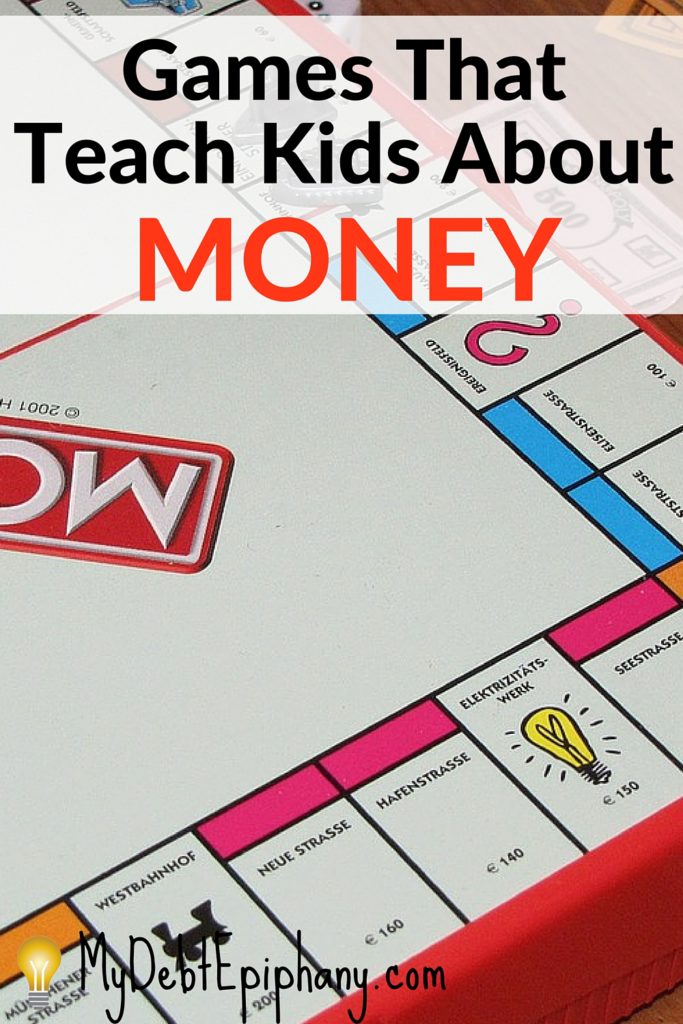Popular Games that Teach Kids About Money
One of my life-long goals as a parent aside from raising my child properly and giving him a good life is to teach my son how to avoid mistakes I made in the past so he doesn’t have to experience some of the things I had to experience. Some of those mistakes I made are money mistakes.
With all mistakes you live and you learn, but if I can help people (especially my own child) avoid them and learn the things I didn’t learn in time, I’m all for that. When it comes to teaching kids about money – depending on each child’s age – there are some things they will understand and some things they won’t.
And let’s face it, kids don’t always learn best and retain valuable information by you simply talking to them and telling them stories.
Since I have a younger child, one of the best ways for me to teach my son basic money management skills and lessons is to play certain games with him. We have family game night every month and lately, I’ve been trying to sneak in games that promote financial literacy so he can learn while having fun.
If you’re trying to teach your kids about money also but in a fun and engaging way that doesn’t bore them, consider giving some of these interesting games a try.
Table of Contents
Life

I absolutely love the Game of Life. The game was originally released in the 1960s with an initial intention of promoting virtue and happiness, but it does a much better job at teaching kids about personal finance.
To play the game, you choose a character and car, then spin the spinner to move across the board and see which life events you land on. You can choose to go to college (which involves taking out student loans.
You get married, buy a house, possibly have kids, pay taxes, and deal with life as it comes which can include anything and everything from getting a flat tire and dealing with storm damage to your home to writing a best-selling book or changing careers and salaries.
The game ends when you go through the entire board and stop at the last space which is retirement. The person with the highest net worth wins.
I actually used to play the video game on the original PlayStation when I was younger and favor the video game over the actual board game. When my husband and I got an original PlayStation game system a few years ago, we made sure we found this game so we could play it with our son and he loves it just as much as I did.
However, I understand that the game is a bit dated and flawed and wanted to point out a few things I didn’t agree with:
-You should be able to retire before the age of 65 but the game doesn’t give you an option to do so
-You don’t absolutely have to buy a house and get married in real life even though the game forces you to do this as well
-And you can attend college without going into debt but if you choose college in the game, you automatically go into debt. On the video game it’s $40,000 and on the board game, I think it’s $100,000.
On the other hand, the game teaches kids a lot of real money lessons and lets them learn about life and finance through the experience of playing the game. We played a few times over Memorial Day weekend and my son won after his first time playing with a $1.5 million net worth and he lived in a mobile home with no kids. The next time we played, he won again with a $3 million net worth, a modest house, two kids, and insurance since he got tired of having to pay for accidents with his disposable cash throughout the game.
Some of the most important skills and lessons this game teaches kids are:
- The importance of building your net worth along with your income
- How attending college can increase your chances of getting a higher paying job
- Larger homes often cost more than smaller homes and purchasing one can affect your cash flow
- Obtaining insurance can protect you and save you money
- Building wealth can take decades
- Life is unexpected and you never know what’s going to happen so all you can do is prepare
The game of Life plays out differently no matter how many times you play it which is truly a valuable lesson.
Monopoly

Monopoly is another popular classic game that everyone should play at one time or another. They had a videogame version of this too back in the day but it was rather boring in my opinion, so I’d recommend just sticking to the board game.
Monopoly covers the strategy side of personal finance where you set goals and make calculated moves to achieve them on time. The main point of the game is to invest in as many properties as you can without going bankrupt. The person with the most money at the end of the game wins.
This game can take a long time if you play it with a few other people so I like that there is a Junior Monopoly version of the game with a smaller game board for kids with a shorter attention span. This game also teaches kids some important money lessons like:
- The basics of managing money so you don’t overspend and wind up left with nothing
- How to diversify your assets and the importance of having multiple streams of income
- Avoid putting all your eggs in one basket
- Investing in real estate – This game communicates to kids that the more they invest, the higher their earning potential can be. In real life, if you had the money to purchase more than one investment property, you might do so because you could earn more from tenants that way.
CASHFLOW 101

CASHFLOW for Kids is a game for children ages 6-12 that was created by Rich Dad, Poor Dad book author, Robert T. Kiyosaki. This game costs a little more than your average board game, but that is because it’s packed with good information that strictly promotes financial literacy concepts.
The game helps teach kids the basics of topics like:
- Investing and capital gains
- Assets and liabilities
- Basic Accounting
Winning the game involves breaking out of the rat race by stacking up enough cash, or by generating at least $50,000 in passive income and landing on your dream (which players choose at the beginning of the game). Pretty cool concept.
Payday

Payday is a classic game that was invented in the 1970s for kids ages 8 and up. The object of the game is to be the player with the most cash and savings when the game ends. The game is played with a board, one die, four playing pieces, and play money of course.
Players have bills and expenses to pay throughout the game and it teaches kids the fundamentals of budgeting. The game has been remade, but the original version is on the cheap side and has insurance and saving options.
These Board Games Aren’t Perfect
Some of these games are pretty old and others have been remade. But all in all, I they’re a great way to get your child on the right path in terms of understanding basic aspects of money and how to manage it.
These games shouldn’t be the only way you teach your child about money since at the end of the day, they are games and not reality. But they are a good way to get the conversation going and convey some basic valuable concepts.
I’ve just scratched the surface here as there are many other personal finance-friendly games to play with your kids.

Stop Worrying About Money and Regain Control

Join 5,000+ others to get access to free printables to help you manage your monthly bills, reduce expenses, pay off debt, and more. Receive just two emails per month with exclusive content to help you on your journey.


